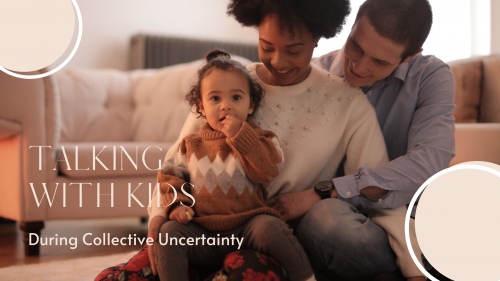
Talking with Kids During Collective Uncertainty
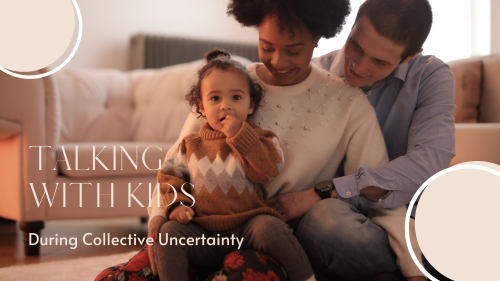 By Holly Schweitzer Dunn, LISW
By Holly Schweitzer Dunn, LISW

 By Holly Schweitzer Dunn, LISW
By Holly Schweitzer Dunn, LISW


As we’ve shared with our clients already, it’s important to continue with mental health treatment when possible during our current pandemic to provide stability to more tumultuous times. But many people who aren’t already under the care of a mental health practitioner may notice that with continued uncertainty, they also be feeling a bit unsteady.
Based on our operating definition of trauma, the COVID-19 experience meets a few hallmarks:
It’s important to acknowledge that everybody experiences challenging times differently. While there might be ways of coping that are more or less healthy, there’s no “wrong” way to deal with trauma. For many people, survival is enough – at least to begin.
For those who have not experienced mental health treatment, there’s likely a few things happening under the surface that you should be aware of:
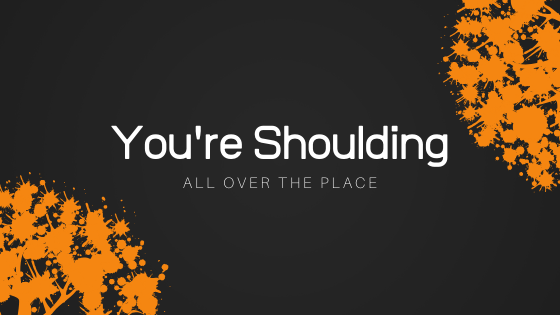

For all of our therapists, a red flag of overusing the judgment faculty part of the brain is using the word “should.” A judge is someone who divides, decides, casts an opinion or makes a decision about a situation. It renders a Should: this person Should not have done this. It divides an experience into camps of right and wrong, and a judge sits above that situation.
It’s human nature to give thought to past situations that didn’t go as desired. What could we have done differently? How should we have thought about this before? These are human questions. And they can be useful if considered in a way that says, “now, I have a choice” and move from a place of intention rather than reaction. An element of discernment is healthy and normal.
However, discernment turns to judgment when you attach shame to it. When someone tells about an experience and inserts multiple Shoulds, we hear the brain trying to find power when it was powerless. The Should, a core negative belief, is evidence of some self-blame. If the Shoulds keep you up at night about either past or potential future situations, it becomes a potential source of anxiety or depression, or a myriad of other mental health concerns. It can feed a habit of the brain constantly seeking danger, as blame is often evidence of the brain’s way of labeling a threat.
When you find yourself Shoulding, here are a few things you can do:


At MBHA, one of the cornerstones to treatment is an EMDR-infused philosophy that honors the body and the emotions of one’s past experiences while simultaneously keeping one foot in the present moment.
When trauma occurs, the brain responds by becoming hyper-vigilant or “stuck” in accessing (read: judging) if a threat is present, and to make up for the extra awareness the observing part of the brain becomes underdeveloped. In EMDR treatment, we spend time in a resourcing stage so that the person can feel grounded in a sense of safety. The process involves looking in on the past from the present – not recreating the past.
One of the challenges of EMDR is when the judging brain wants to take over, often experienced as a client asks “am I doing this right?” The process necessitates witnessing instead of judging. The brain moves from labeling a moment to witnessing the moment and examining the feelings and emotions that arise.
Treatments like EMDR work to develop the underdeveloped observing brain by safely noticing what’s happening in the moment. They can feel safe, aware they’re sitting in a space with a person they trust, while still tuning into the sensations of the body, and the emotions that arise while a person calls up the memory. As we enhance the brain’s ability to do that – to observe the reactions of our body and emotions, it’s possible to get more practiced at removing the element of judgment from our day-to-day experience.
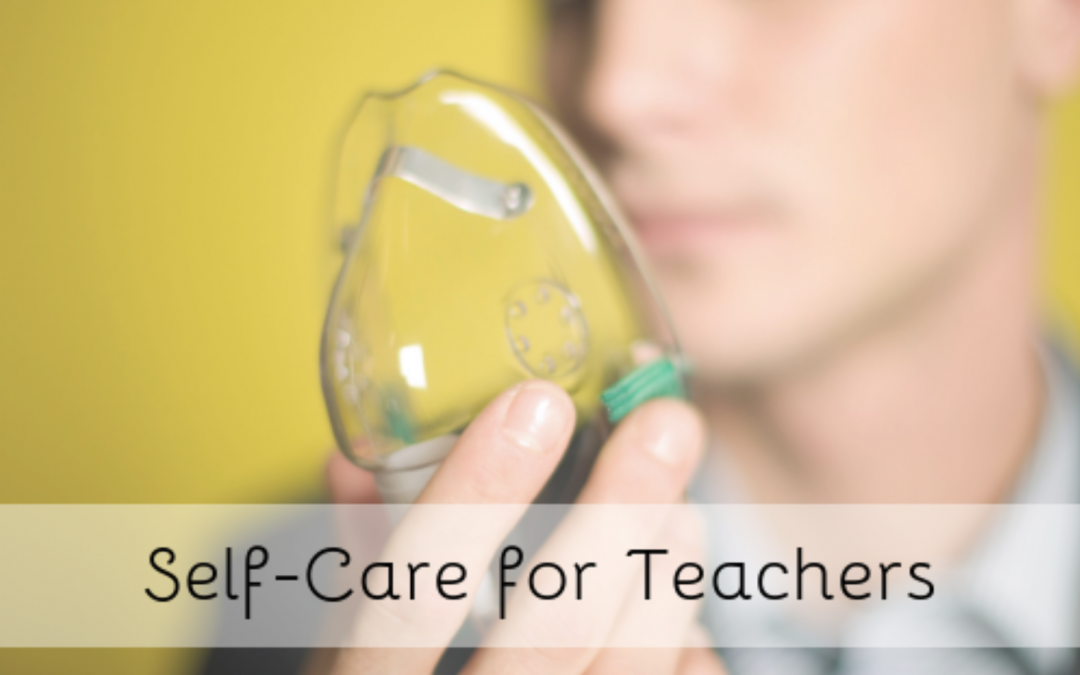
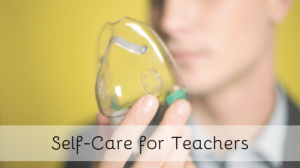 The concept of self-care is catching our collective attention. We’re being admonished to “put the oxygen mask on yourself first” and now we have research to support the claim that self-care helps people manage job-related stress.
The concept of self-care is catching our collective attention. We’re being admonished to “put the oxygen mask on yourself first” and now we have research to support the claim that self-care helps people manage job-related stress.
So what exactly does self-care look like? Is it simply taking more bubble baths and scheduling a spa day? It could be, but self-care reaches beyond pampering, specifically for teachers. When we work with educators in our offices, we hear about the need for something to help in the heat of the moment, keeping the pace of the day with younger and older children alike. Often times, the stress our teachers carry has more to do with the burdens carried by the children they teach than it does the job description they’re trying to fulfill. Especially after many years of experience, our teachers know about delivering content and differentiating instruction. What teachers ask for more often is knowing how to continue to show compassion to children and families when the heartbreak feels unrelenting.
While burnout is an issue for the education industry, the bigger threat is heartbreak. Teachers are seeing more and more students show up in the morning hungry because they’ve not had breakfast, or – even more challenging – children starving for connection. Our educators could go broke with the granola bars and markers they stock. They know how to keep their classrooms supplied with academic tools. A tougher obstacle is helping teachers learn to sleep at night when their hearts are filled with worry about the student whose life outside of school is unsafe.
As Chick Moorman (author of The Spirit Whisperer and Parent Talk) said once to Holly, when you teach to a child’s spirit, you’ve got them, no matter what the subject matter. The best teachers are working from the heart-level. However, opening yourself to the heights of joy that come with heartfulness also renders you vulnerable to the depths of grief that come with the territory.
From our perspective, the core of self-care for the educator lies in keeping the heart both soft and strong. To be good at what we do in helping professions, we need to continue to cultivate compassion, empathy and acceptance. Our practices center around quieting the talk of “not enough” and incorporating moments of gratitude and joy, even in the midst of challenges.
Mindfulness expert John Kabat-Zin teaches about the “acceptance of what is”. When a student comes from a home without running water, it’s hard for a teacher to accept that he cannot change the situation. But the teacher can offer a learning space that helps hold for the student the various stressors and hurts they bring into the classroom. In the same way, a teacher might come to school tired after his own sleepless night. Self acceptance, i.e. “today’s lecture may not be as energetic as last week’s and that’s okay,” may free the teacher to offer what he does have to give rather than focusing on deficits.
When we learn to recognize our limits, specifically as they relate to our roles as educators and helpers, we can acknowledge and celebrate the victories we do experience. When working in a capacity that will never “finish” – the students we teach will never be done learning and developing – it’s easy to overlook opportunities to feel like we’ve done enough. A daily celebration and gratitude practice for the small successes keeps the heart open and strong, ready to return the next day.
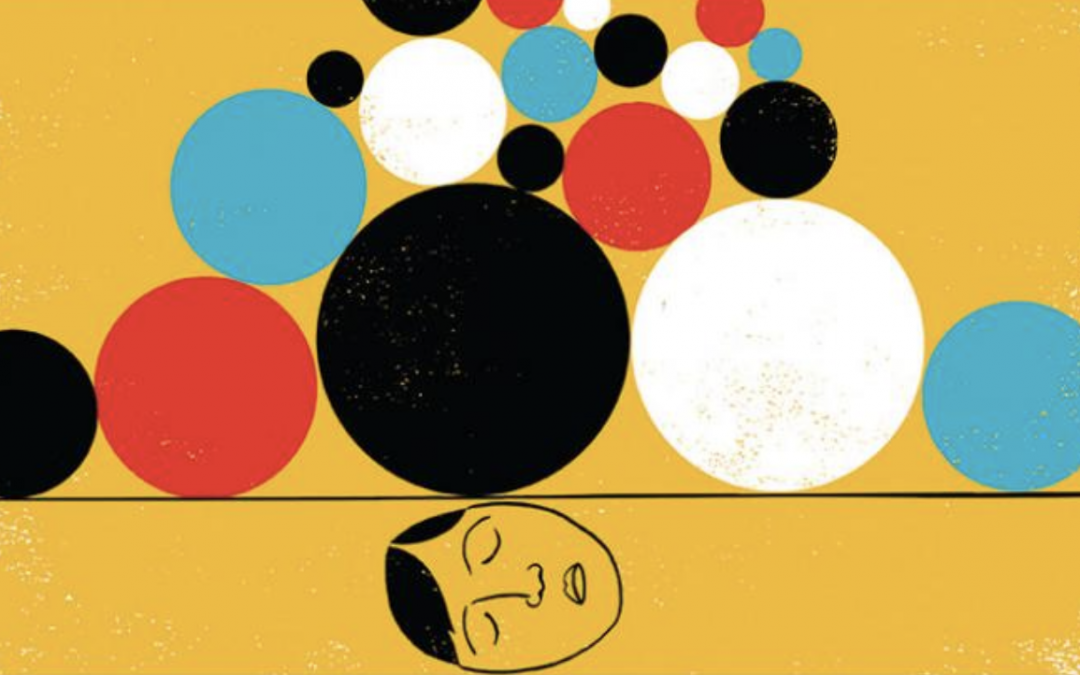
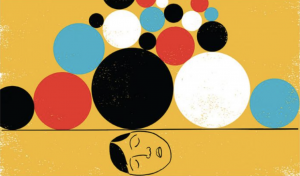 “He just won’t sit still, always trying to escape to the bathroom or sharpening his pencil or something.” “She cannot keep her hands to herself!” “We caught him stealing again.”
“He just won’t sit still, always trying to escape to the bathroom or sharpening his pencil or something.” “She cannot keep her hands to herself!” “We caught him stealing again.”
Thanks to ongoing training in many school systems – Findlay City Schools, to name one – teachers have come to understand that the negative behaviors experienced in a classroom setting, specifically among younger children, are often the direct result of traumatic experiences. More and more, we find teachers able to vocalize that a student’s challenges aren’t simply due to intelligence or even poor decision making. Science has strong evidence to show that early exposure to emotional abuse, neglect, or other adverse childhood experiences shape the development of young brains and bodies differently than those of children raised in healthy and well-resourced households.
Recognizing the impact of trauma is a large and sometimes arduous first step in the journey toward helping children find health, and it necessitates its own training. (For more info on adding that to your school’s professional development, contact us.) As teachers and community members, we can – and should – offer empathy and support to these young people.
We can use our roles as leaders to offer students something beyond sentiment and referrals (both of which are critically important). We can offer them learning spaces that emphasize autonomy. We can teach them tools for self-regulation, and we can help them acknowledge the messages that the body sends to the brain in an attempt to protect it from future harm.
Holly Schweitzer Dunn, LISW, who has worked with teachers and in numerous school systems throughout her career has found several elements to be helpful for the personal and professional development of our society’s nurturers.
Don’t take it personally. It sometimes may seem as if a student is deliberately testing your boundaries – and she/he might be! But this is crucial in his/her ability to build trust in you as a caretaker. It’s possible to be loving and firm at the same time, and the best way to do that is to remember that this has nothing to do with you as a person or as a qualified educator. Testing boundaries is typical behavior for students, especially from those who have experienced inconsistency with the adults in their lives. If you focus on the student-teacher relationship, learning will happen. In clinical language, we’re focusing on healing the disrupted attachment the child has experienced with caregivers. Once the child knows you can be trusted the ABCs and 1-2-3s will fall into place.
Prepare the container. The brains and bodies of individuals who experience trauma work differently than those who are more accustomed to healthy environments. A traumatized brain signals more quickly and more often that it is in potential danger. This is the body’s way of keeping the person safe. This is helpful when there is an actual threat; however, the body reacts even in non threatening situations when there is only perceived danger. Among other behaviors, this presents as test anxiety, acting out, shutting down, and hyperactivity in the classroom. There are several simple mindfulness-based interventions available to assist children (and adults!) in returning the learning center of the brain to full functionality.
Self-regulation is key. Biologically, we’re wired to follow the energetic and emotional lead of those around us. We’ve all had non-classroom examples of situations where we can sense a person’s anger and feel our own physical reaction to it: perhaps listening to a patron berate an apologetic waitress or walking into a room where a couple has just had an argument. Our own throats go dry and hearts beat a bit stronger, right? We are, as Brene Brown teaches, creatures wired for connection. Young people are especially sensitive to the emotions of those around them. Interacting with individuals who have experienced trauma requires calm and centered responses. As a leader, your work is to be aware of your triggers so you can respond to challenges instead of react out of habit. Simple mindfulness exercises, when practiced outside of challenging situations, are more easily accessible in times of stress. When you do become emotionally activated, knowing what helps bring you back to a place of centeredness is essential to maintain your own self-regulation.